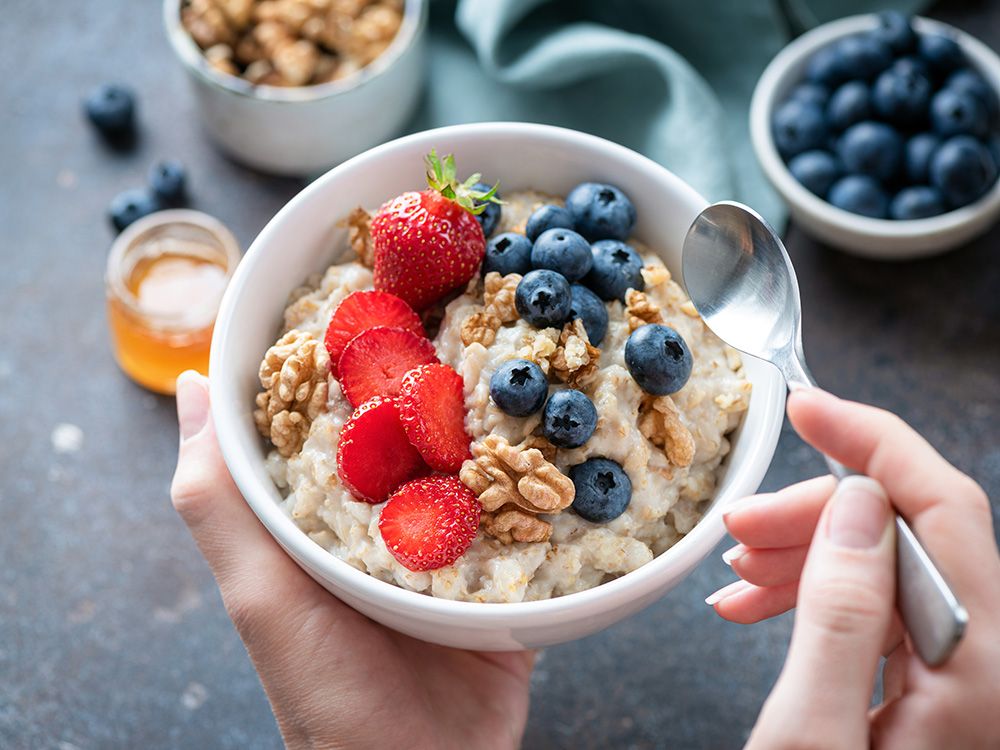TikTok can be an
when it comes to scientifically sound wellness advice. Health specialists agree that the likes of “
” and
aren’t the remedies content creators purport them to be. In a surprising turn of events, there’s one trend sweeping the platform that nutrition experts are getting behind:
.
What is fibermaxxing, and what are the benefits?
Refreshingly, this trend focuses on what you add to your diet, not what you avoid or take away.
As you’ve probably gathered from the term’s Gen Z vibes, fibermaxxing revolves around getting the most from the nutrient. (The gut health equivalent to predecessors such as
and
.)
is the poster child, but you can fibermaxx with foods you probably already have in your kitchen. It can be as easy as eating
topped with berries and shredded coconut or a
with chopped peppers and avocado, leaving the skins on your fruit and vegetables, or sprinkling a grain bowl with
.
“Fibermaxxing is all about squeezing more fibre into every meal, and your gut microbes will thank you for it. Fibre is the fuel they thrive on, helping to keep your gut healthy, your digestion regular and your immune system supported,”
, a medical doctor, professor, author and microbiome expert in the U.K., said in an
.
In the post, Spector cited a
World Health Organization review
that found that eating five grams more fibre a day could reduce the risk of premature death by roughly 14 per cent, while making a
charred corn and white bean salad
. (A 170-gram serving of cooked white beans contains
alone.)
“The benefits go well beyond the gut,” Spector added. “Fibre slows digestion, helps regulate appetite and is linked to a lower risk of heart disease, Type 2 diabetes and even some cancers. If there’s one trend worth trying this year, it’s this one.”
How do you fibermaxx?
Women need 25 grams of fibre per day and men 38 grams, yet most Canadians only get half that, according to
.
, a surgeon with more than 10 million followers across platforms, showed how straightforward it can be to meet daily requirements. Fifty grams of pistachios, 80 grams of edamame, 100 grams of frozen green peas or hummus, one medium pear with the skin on, 75 grams of lentils and one tablespoon of chia seeds, psyllium husk or flaxseed all have five grams of fibre each.
“It’s pretty easy to combine one, two or even three of these things to get a very fibre-rich meal,” Rajan said in a
, holding up 60 grams of rolled oats, a large apple and 50 grams of almonds.
“This is 15 grams of fibre. And when you stack fibre like this, you don’t just get 15 grams of fibre, but you get 15 grams from three different sources, all of which provide different phytonutrients, polyphenols, prebiotic fibres, which all have different impacts on your gut microbiome and their own special skill set. Not to mention different prebiotics like pectin or beta-glucan (a type of soluble fibre) in the oats and different compositions of soluble and insoluble fibres.”
Is there a right way to fibermaxx?
Toronto-based registered dietitian
thinks fibermaxxing is a step in the right direction, especially considering that most Canadians get only half as much fibre as they need.
Adequate fibre has many benefits, including managing cholesterol levels and promoting a healthy gut microbiome, underscores Natividad-Li in an email to National Post. “That said, it’s important to increase fibre gradually, as adding too much too quickly can lead to bloating, gas, constipation or diarrhea.”
She recommends incorporating fibre-rich foods, such as vegetables, fruits,
, whole grains, nuts and seeds, rather than taking supplements. “And for individuals with IBS (irritable bowel syndrome) or other gastrointestinal conditions, it’s best to work with a healthcare professional to tailor a plan that supports their digestive health.”
Our website is the place for the latest breaking news, exclusive scoops, longreads and provocative commentary. Please bookmark nationalpost.com and sign up for our cookbook and recipe newsletter, Cook This, here.







